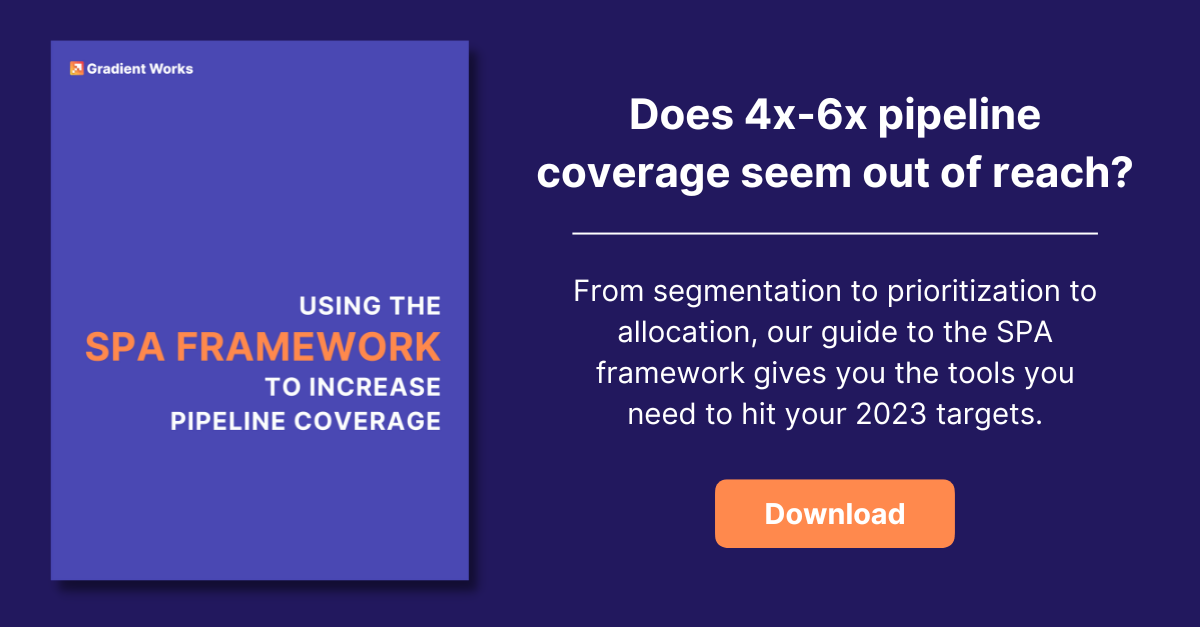Here's a thorny problem in sales right now: an account executive's self-sourced sales pipeline.
Are you happy with the number of AE-sourced opportunities in your pipeline right now? How many AEs on your team are hitting their self-sourced goals?
As more teams move to full-cycle Account Executives, many of us are realizing that not all AEs know how to source their own sales pipeline. Outbound is hard. SDRs are trained to do prospecting well (and at scale), but AEs don't always have that training, at least not recently. AEs have been trained to close. And it turns out that opening and closing are different skill sets.
So how can you help your Account Executives build more self-sourced pipeline? Follow these 5 steps.
1. Nail down your ICP
First, be sure you really, truly know who your ideal customer is. Has that changed at all this year? If you haven't reviewed your ICP recently, it's time. Don't assume that what you think you know about your ICP is true without doing a little work to confirm. What kind of accounts have been closing? What do you know about your best customers?
If you want more information about refining your ICP, read this.
2. Segment and prioritize your accounts
Now that you're confident in your ICP definition, you need to segment and prioritize accounts to help reps focus. What groups of accounts do you want reps going after? Which accounts should they target first? Don't make AEs make decisions about which accounts to target.
Use factors like fit and timing to score accounts' potential. Use those scores to assign accounts to AEs to work.
Read our guide to the SPA framework for more about segmentation and prioritization.
3. Give account executives small books of high-potential prospects
Smaller books will ensure reps can focus on each account. Be sure that every rep has a small, manageable book of accounts they can reach out to now. Keep that book full of high-priority accounts. This means you may need to remove accounts from a rep's book if they're unworkable, which is fine. Just replace unworkable accounts with fresh ones. The goal here is being sure your account executives are hyper focused.
You may want to look at a dynamic books approach to account selection. Learn more about dynamic books here.
4. Hold reps accountable for engagement with their sales pipeline
Outbound prospecting requires persistence. Be sure you're measuring and holding reps accountable for the types of engagement activities that are important to your sales cycles. For B2B sales, that will include multi-threading to make sure you're contacting multiple people in multiple roles at a target account. It may also include a certain number of activities over a certain period of time and channels. Whatever it is, make sure reps can track how well they're doing against those activities and that you're checking in on them.
Here are a few sales rep productivity metrics we recommend tracking.
5. Review and coach regularly
Help reps understand how effective their outreach is. Identify areas where they're doing well, and areas they could improve. Use data to show them what's working. Brainstorm creative ideas to reach a target prospect, help them think through roadblocks or test new approaches. Outbound prospecting takes a great deal of creativity, so set aside time to talk to each rep about their prospects.
This is where we'll do a short pitch for Gradient Works. Our Account Coverage intelligence will give you the reporting you need to see exactly how AEs are working their books, how they're penetrating target accounts, and more. Use it to help your AEs self-source more sales pipeline.






